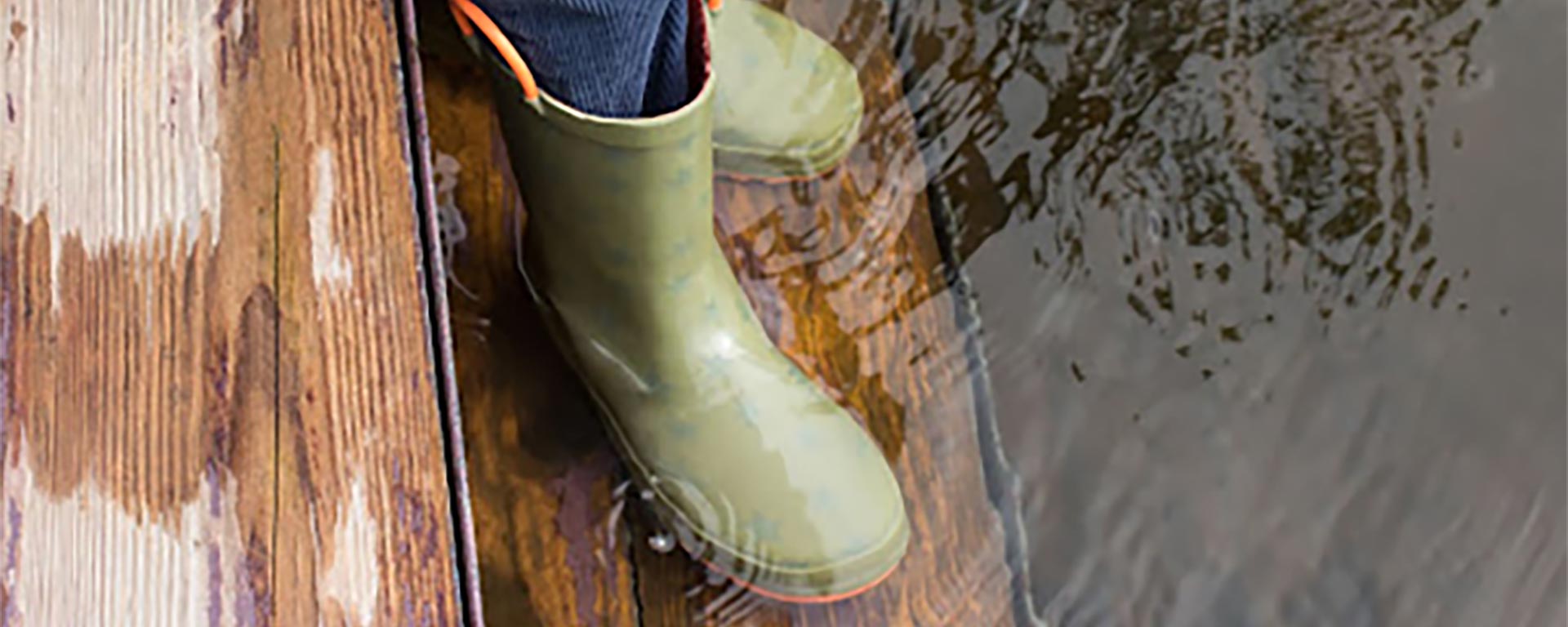
Flood preparedness tips during springtime
While Spring is known to bring us the first signs of warmth and flowers in bloom, it doesn’t come without Spring showers. Did you know that flooding is the most hazardous weather disaster in the United States? A flood can happen at any time—even in the spring! We'll take you through best practices for protecting your home & property in the spread of melted snow and floods.
Turn around, don't drown
Inland flooding usually occurs during or after a heavy, slow-moving rainstorm. Depending on your area, it can also result from strong coastal storms. Severe inland flooding can occur in areas that are hundreds of miles from the eye of a hurricane.
Never underestimate the power or force of water. A mere six inches of fast-moving flood water can knock over an adult. It takes only two feet of rushing water to carry away a vehicle. This includes pickups and SUVs.
If you come to an area that is covered with water, you will not know the depth of the water or the condition of the ground under the water. This is especially true during the dark when your vision is much more limited.
Play it smart, play it safe. Whether driving or walking, any time you come to a flooded road, remember to think to yourself, Turn around, don't drown!
Play it safe
We may not be able to control weather conditions, but with a little bit of planning, you can take all possible precautions to ensure your safety and protect your home from severe damage. Here are some measures you can take to safeguard your home and family:
- Find out how vulnerable your home is to flooding by determining the elevation of your property.
- If you live in a flood-prone area, you should keep materials like these on hand: sandbags, plywood, lumber, plastic sheeting, trash bags, shovels, work boots, and gloves.
- Purchase a weather radio. These special, battery-operated radios cost as little as $20 and are available at many hardware and appliance stores and other retail outlets.
- Put together a disaster survival kit. Keep the following supplies near at hand and put them in a water-tight container: flashlight with extra batteries, battery-powered radio and weather radio, first aid kit, medicines, eyeglasses, drinking water, non-perishable foods, change of clothes, cash and credit cards, and copies of all important papers.
- Plan two evacuation routes in advance. Don’t wait until threatening weather conditions occur before trying to determine your route to safety. Be aware of streams, drainage channels, and low areas in your region that are prone to flooding, so that your evacuation routes are not cut off.
- Do not park your vehicle near streams or rivers, especially during threatening weather conditions.
If flooding occurs
Any time there is heavy rain in your area, be sure to follow these simple safety rules:
- If flooding begins in your area, go to higher ground immediately.
- NEVER drive through flooded roadways. Remember that it takes only two feet of water to carry away a vehicle, including pickups and SUVs.
- When walking, do not attempt to cross flowing streams. Remember that it takes only six inches of rushing water to knock an adult off their feet.
- If your vehicle stalls, get out immediately and go to higher ground.
- Be extra cautious at night, when it is harder to see possible flood dangers.
After a flood
Some tips to keep in mind after a flood - Clean and disinfect everything that got wet. Floodwaters pick up sewage and chemicals from roads, farms, factories, and storage buildings. Spoiled food, flooded cosmetics, and medicines are health hazards. When in doubt, throw them out.
- Soaked carpeting and padding should be pulled up and discarded.
- Look before you step. After a flood, the ground and floors are covered with debris including broken bottles and nails. Watch your step!
- The use of large fans can speed up the drying process and help avoid the development of mold.
- Drowning is the number one cause of flood deaths. Most of these drownings occur during flash floods. Six inches of rapidly moving water can knock you off your feet. If you need to go through an area where water is standing, use a pole or stick to make sure that the ground is solid under the surface.
- Do not drive through a flooded area. Don't drive around road barriers; the road or bridge may be washed out.
- Stay away from power lines and electrical wires. Electrical current can travel through water and increase the risk of execution. Report downed power lines to your utility company or local emergency manager.
- If the water level got so high that appliances were soaked, turn off your electricity until they can dry out. Some appliances, such as television sets, can shock you even after they have been unplugged. Don't use appliances or motors that have gotten wet unless they have been taken apart, cleaned, and dried.
- Be alert for gas leaks. Use a flashlight to inspect for damage. Don't smoke or use candles, lanterns, or open flames unless you are sure that the gas has been turned off and the area has been aired out.
- Carbon monoxide exhaust kills. Use a generator or other gasoline-powered machine outdoors. The same goes for camping stoves. Fumes from charcoal are especially deadly; if you must cook with charcoal, use it only outdoors.
- Watch for animals, especially snakes. Small animals that have been flooded out of their homes may seek shelter in yours. Use a pole or stick to poke and turn items over and scare away small animals.
Let the experts help execute your flood preparedness plan and bring your mind ease with the protection of AFI’s Umbrella Insurance, which includes coverage above and beyond your homeowner, personal liability, and auto insurance. Protect nearly everything else with AFI insurance products. Learn more here.